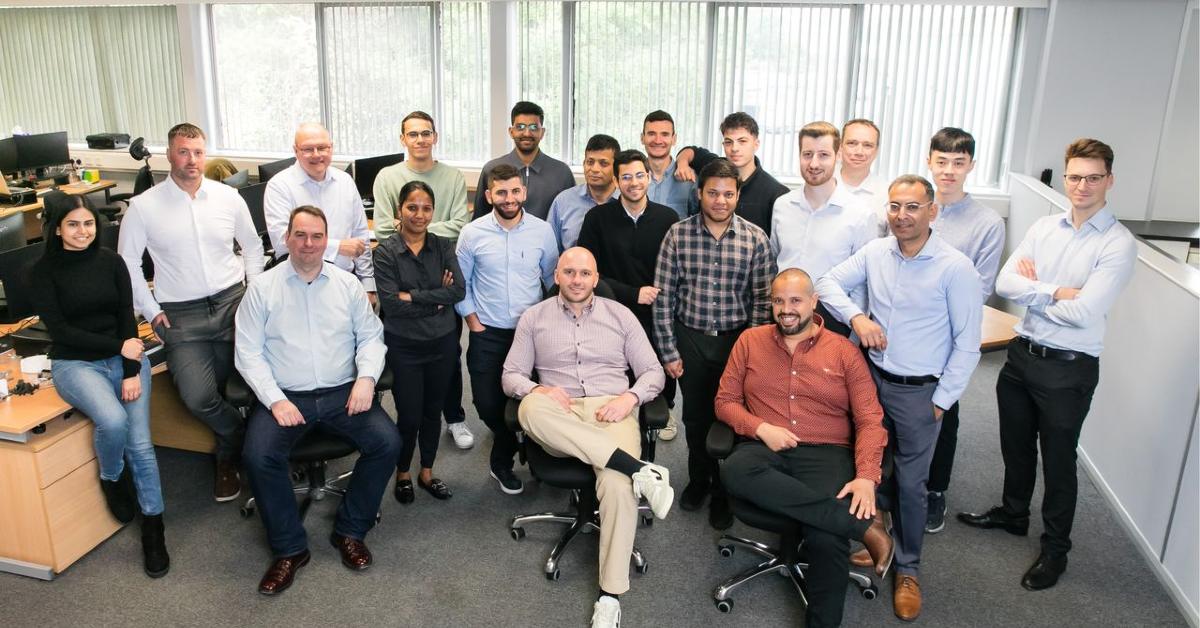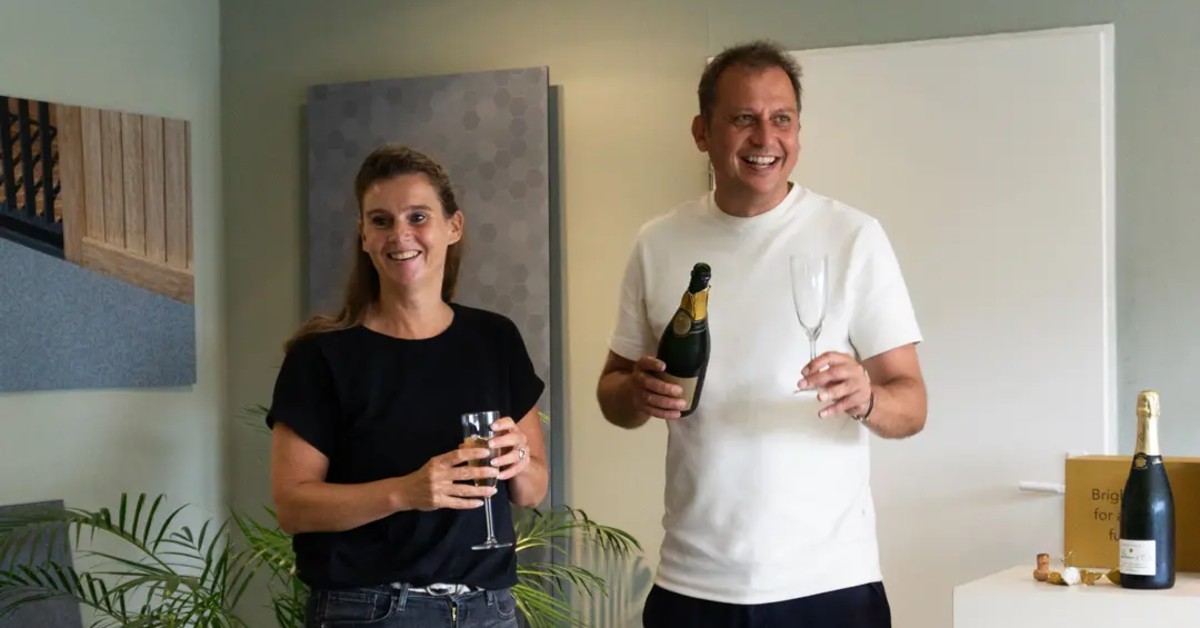“I don’t like people that always focus on problems. People that see barriers wherever they go. Whatever you suggest, whatever you think, there is always something that’s not gonna make it work. There is usually a lot of negative energy if you encounter people like these in a regular workplace. I mean, I too, lose myself in negative thinking once in a while. Still I would think of myself as someone that sees opportunities and challenges in everyday life. I’m opportunistic, want to make the best out of things. I move quickly, don’t have troubles taking decisions and learn through trial and error.”
[this is a guest blog by Sabrina Bos, first published on femalestartupfounder.nl ]
Frustrated
Yet, a few months back I realized that maybe these personality traits that I am quite happy with, were not always beneficial to my my startup (accessART). We had this issue with our marketplace model that on the artist side of the platform we were doing quite well, but the buyer side was lagging. We got stuck and were getting increasingly frustrated.
Digging
So, with the team, we started digging into the things we had been doing over the last couple of months and we realized one thing: we had not nailed that one, annoying, painful customer problem yet. We had just been thinking in how to build a great solution, not how to solve a problem.
How we were thinking in solutions, not focus on problems
It’s great to think in solutions. It’s exciting to envision mature, broad products that are conquering the world. It’s even more fun when you have the money to build the solutions. In the tech startup context, it means you can hire developers and keep building and building. Until that point that you realize, no one wants your solution. No one is willing to pay for it.
Small iterations
Eric Reis describes this phenomenon really well in his book “The Lean Startup“. Instead of planning for a project and build the whole solution at once, a startup should focus on small iterations, while learning every time. And, in this way, creating a product your customer really wants.
Clear problem
But before you can put this lean startup methodology in practice, it’s crucial to have your problem clear. Or at least, a part of the problem. So you can start building on that part and learning from it.
Simply don’t care enough
Unfortunately it’s really easy to think you have found THE problem that bothers everyone in the world and that you are going to solve. Startup founders (including myself) reference to issues in their own life or listen to things their friends say. But it’s not that easy. Many people simple are not able to put the exact problems in words, or they simply don’t care enough about the problem to pay someone to solve it. I guess you could call these “Almost Problems”.
“Almost Problems” at accessART
In our accessART journey so far, we have been focusing most of our time on helping young professionals find a proper piece of art on their wall instead of mass-print. We identified this target segment and their issue through our first and second round of interviews. This main problem could be broken down in two problems: I cannot find original art (because galleries are scary, there is too much choice) for my budget (no, €5000 is not affordable).
Curated marketplace
So we built a curated marketplace for affordable art. Simple, right? We (kind of) expected things to just happen from there. Well, they didn’t. Our target group has, up to today, not opened their wallet to buy one of the pieces we have online. And all the pieces are original and affordable, and many of them quite cool (if I may say so myself).
Something crucial
Still, it’s easiest to ignore this and focus on improving the solution. We currently have a backlog of approximately 150 new features, bug fixes and alterations with which we think we can fix this lagging buyer side. But before pouring more time and money in the platform, we realized we had to do something crucial. We really have to find the real, painful problem for the right group. We do have this feeling that we’re getting really close, but we are not quite there yet. So, how do we find that real customer problem that we can solve?
So how do you get to that real customer problem?
The bad news is: I don’t have the perfect answer – otherwise we would be growing exponentially by now. The good news: In my journey towards the perfect answer I have met great people with much more expertise than I have.
Product-solution fit
My main finding in this process is that you need to have product-solution fit, before you can achieve product-market fit. So first discover the real problem, quickly design a simple solution, validate, iterate and eventually find a matching problem and solution. Then you can head out to the market and start scaling.
Step 1: Find the problem (assumptions)
I recently had a chat with Bas, the guy behind startupgui.de. He has created a really great tool that breaks down the road to success in many small, very small steps. This was really something that I’d had been missing in all the other tools there are. Filling the pain/gain canvas is great, but quite high-level.
In some fun workshops with the whole team, we followed the steps of startupgui.de . We were then able to identify some things that we had been doing wrong so far.
1) Wrong focus – we had targeted the complete wrong segment (less than 5% of our sales so far came from our initial target segment, 95% came from a very clear segment that we had ignored thus far).
2) No pain points – we didn’t have the pain points in our customer journey clear. After writing down the customer journey in detail (we already had some knowledge from the first 6-9 months in business), it became much clearer where the pain points lay. Next to that, we found in which areas we don’t have enough knowledge yet to identify the underlying problem.
3) Thinking in solutions – we realized we were not different enough from the competition (we were told this before but had no tools to improve on this so far). The Blue Ocean ERRC grid has been of much help in this area.
Not that different from competitors
We soon found out that we were very easily able to fill the “Raise” and “Create” fields. The “Reducing” or “Eliminating” fields remained quite empty. Although this is not necessarily bad, it made it very clearly to us that we were thinking in solutions and not eliminating problems. In addition to this, based on this grid we found we were just not that different to our competitors than we hoped (.. thought). So, plenty of work to do!
Sanity check
Another great “sanity check” in finding your real customer problem was given by the guys from Rockboost. They have lots of great information about growth hacking. But there is one slide of Chris’ his presentation on the 7 pillars of growth hacking that has stayed with me. It really makes you think, what primary desire of a person am I fulfilling?
[image]
Affordable art get someone laid?
We thought to ourselves, “hmm.. will affordable art get someone laid?”. I still have to see that happening. If you are creating a product that only makes people look great and feel great, you have to be damn good in differentiating yourself from your competitors. So, more work to do!
After all these wake-up calls and doing the exercises mentioned above, we now have a much clearer vision of our target segment and their issues. On to validating this!
Step 2: Validate the problem
Based on our current knowledge, we could now make assumptions. Then it’s time to start validating (or not) those assumptions. This is the point where we are now with accessART. We have identified a new, more narrow customer segment and much clearer questions to ask. So, we are ready for the next round of interviews. Unfortunately, nailing these interviews is also not easy.
Mom test
The Mom Test by Roy Fitzpatrick has been one of the better investments in the last couple of months. For about $20 you can download the book (or, the first two chapters for free online if you’re not convinced). This is one of these books that you read with a red, embarrassed face, because you’ve been doing it wrong all along! ? You’ve probably done some things right, but this book really makes it clear how to have proper customer conversations. In these conversations you will see 1) which problems they have and 2) if they are painful/costly enough to be worth solving.
Homework to do
So before starting the third round of interviews next week, we still have some homework to do. It’s tough. Asking the questions that may invalidate all you’ve done the last couple of months. Having the right conversation without guiding your conversation partner to your desired answers. Exciting times ahead!
A Startup is a journey full of learning
It’s not always easy to see this process as fun. The pressure is on, money is running out, people keep asking “how is it going”. But then again, I took the step out of corporate life into startup life to learn stuff like this. Every time you pitch, every time you speak to customers, every time you sell something, you learn new things.
Energy
My learning of the last 1,5 months is that it’s ok (and maybe even necessary) to focus on problems. I never thought that a focus on problems actually could give you energy. A focus on problems does not mean being negative. It does mean digging as deep as you can get and really unveiling what is bothering your prospective customers.
New ideas out of problems
So next time someone around me “sees the problem in everything”, I will listen better and may even get new ideas out of it.
Sabrina Bos is the founder of Amsterdam-based startup AccessArt. On her blog femalestartupfounder.nl she writes about her experiences as a businesswoman in a man’s world.
Stress images copyright Deposit Photos via Dashmote.com










01
From telecom veteran to Dutch Startup Visa success: The Jignesh Dave story